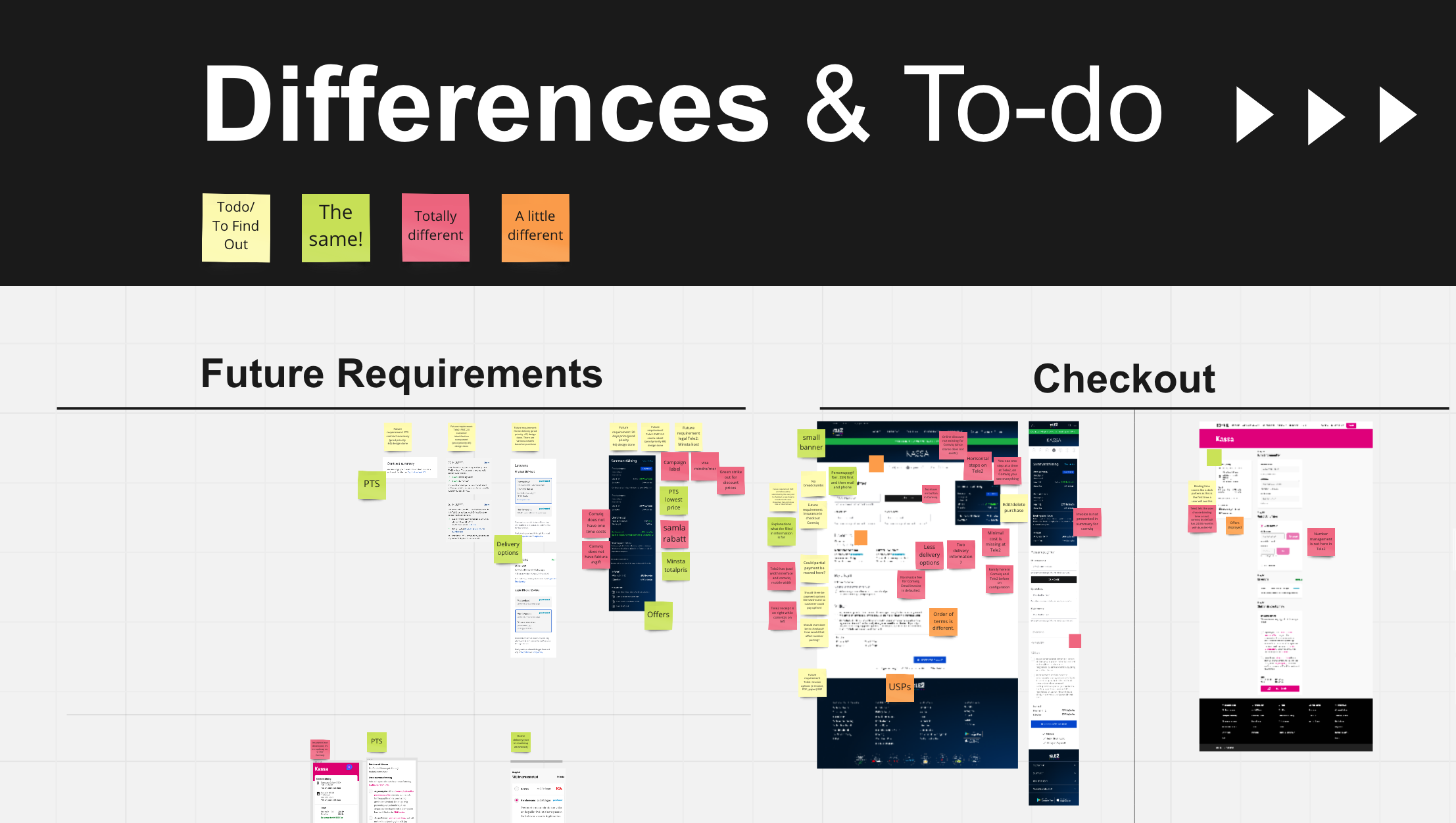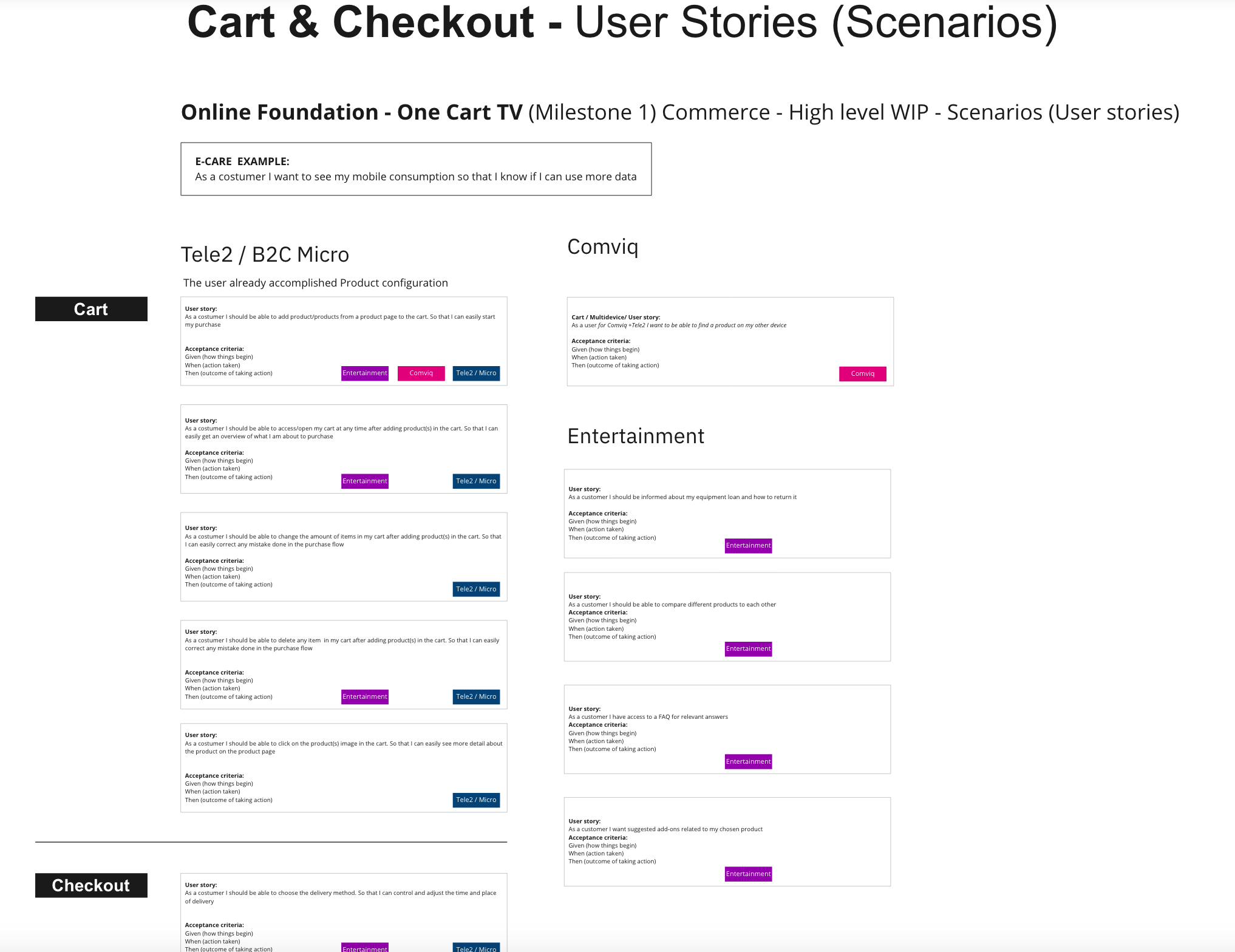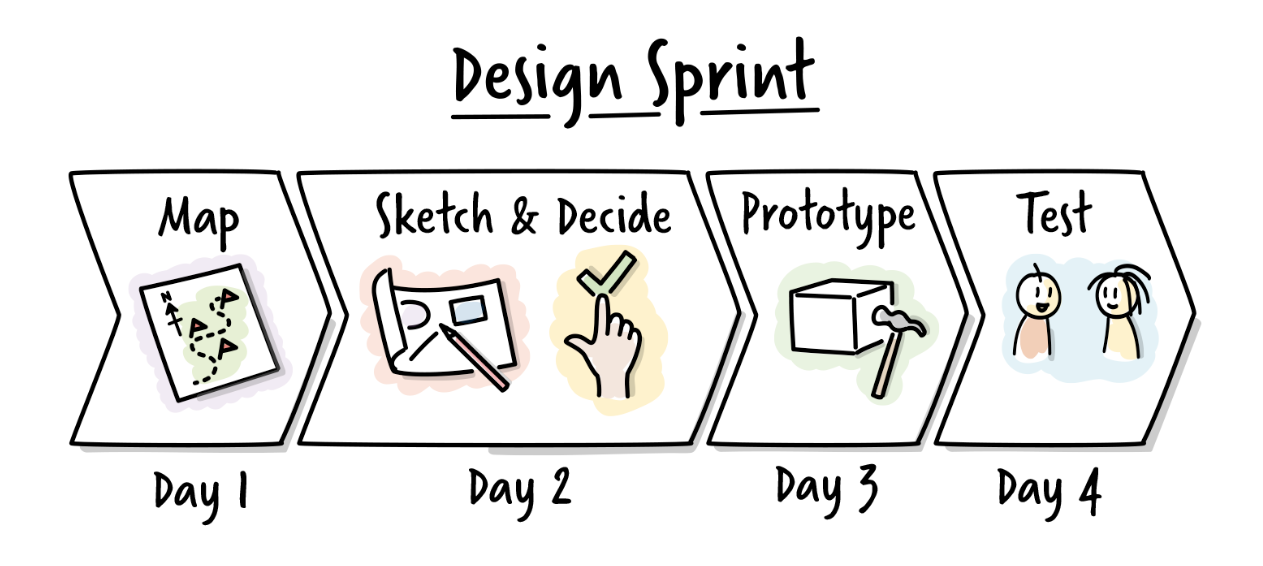
The Challenge:
The purchase experience varies across all services. The experience varies
between products, internal brands and target group (B2B vs B2C). The goal is
to improve the Check Out experience and make it both unified and improved.
Our Goal:
A COMMON USER EXPERIENCE
Combining the needs of various brands and user groups into great experience
My Role:
Lead UX Designer, Design Team Lead
CHALLENGES
• Never been done before
• Many stakeholder and teams across both brands and design teams, had to collaborate
• Time and project allocation. So many different users, with very different wants and needs
• Low UX maturity and a culture that has not focused on design and UX prior.
Work flow
The purchase experience varies across all services. The experience varies between products, internal brands and target group (B2B vs B2C). The goal is to improve the Check Out experience and make it both unified and improved.
• Gather user behaviour data.
This would include:
• Interviews with costumer service and store personel
• Data and analytics
• A/B tests
• Create a dynamic User Journey
• Identify the purchase experience (AS IS)
• Ideate and iterate
• What are things and functions that we want to keep
• What are functions that are universal
• What are functions that are unique
• What are new functions we want to add
• Inventory and design
• Inventory
• User stories
• White label wireframes
• User tests
• UI Design
• Low UX maturity and a culture that has not focused on design and UX prior
workshop driven
Visualizing a user journey is a good idea because it provides a comprehensive understanding of how a user interacts with a product or service. It helps to identify the user’s needs, goals, and pain points throughout their entire journey, from initial awareness to post-purchase evaluation.
By creating a visual representation of the user journey, designers and developers can easily spot areas of improvement, identify opportunities to enhance the user experience, and make informed decisions about product design and development. It also allows teams to empathize with the user and put themselves in their shoes, which is essential for creating user-centered designs that meet their needs and expectations.
Overall, visualizing a user journey helps teams to create more effective and efficient products or services that provide a positive user experience.
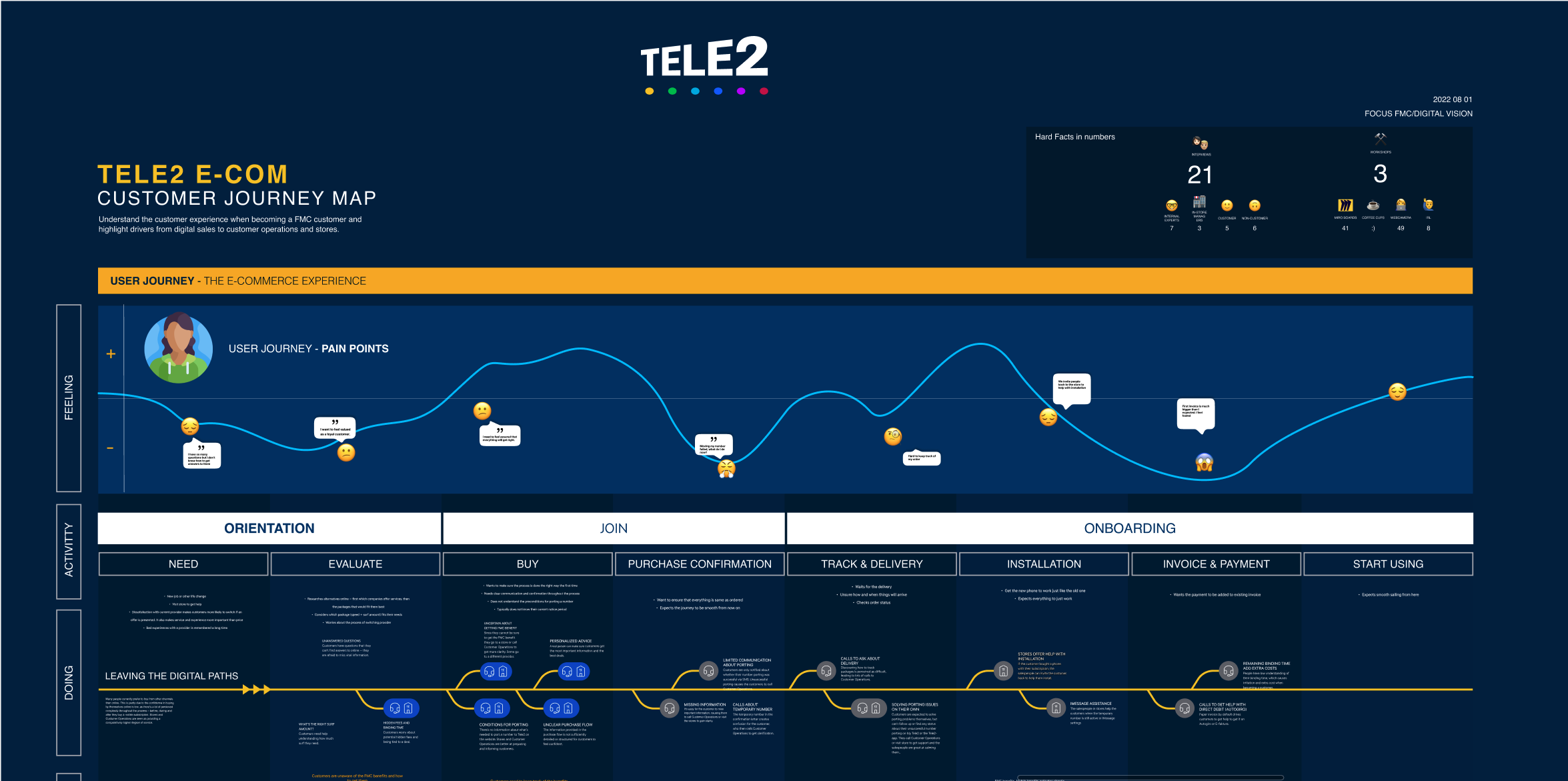
INSIGHTS
Too many stakeholders, too many ideas and topics. The choice to include stakeholders and designers from different cross-functional teams, are great for understanding and sharing of insights and competences. Less so for a fast paced design progress.
NEW APPROACH
I had to change the way we worked and get a clearer, faster, and more efficient core team. I wanted us to really speed up the design process. The best way to do this, having a Design Sprint.
The Design Sprint
DAY 1: Map DAY 2: Sketch & Decide DAY 3: Prototype DAY 4: Test
Take-aways
By Changing the way we worked, we increased speed, insight, understanding and moral. This really made a huge difference. We are now this cross-functional core team, that when needed invites stakeholders or experts to support us. Now we are creating design based on all our collective insight and knowledge. We are swiftly creating and testing design prototypes and iterating to improve the Cart & Checkout experience
THE OUTCOME
OVERCOMING OUR CHALLENGES
• Never been done before ✅
• Many stakeholder and teams across both brands and design teams, had to collaborate ✅
• Time and project allocation. So many different users, with very different wants and needs ✅
• Low UX maturity and a culture that has not focused on design and UX prior ✅.

